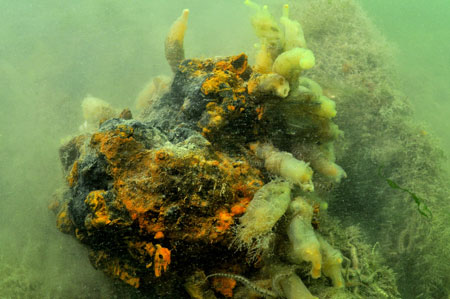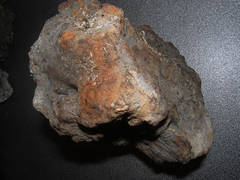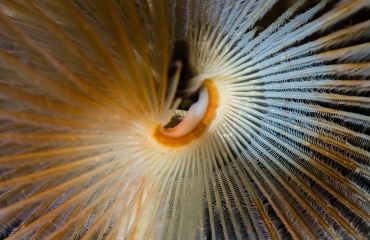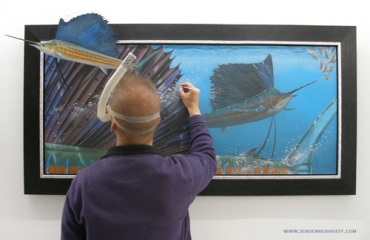Wat zijn slakken? (update)

In de inleiding van `Fosforschelde of…gewoon Oosterschelde?` werd al vermeld dat bij de Zeelandbrug en de Schelphoek slakken als materiaal voor de vooroeververdediging worden gebruikt. En dan gaat het niet om de mooie naaktslakken die we als duiker graag zien. Gijs Jongeleen en Erik Leisink lichten toe waar het wel om gaat.
Wat zijn slakken nou precies? Slakken zijn een industrieel afvalproduct. Er zijn fosforslakken en staalslakken. Hieronder hebben we informatie en definities neergezet die we op internet hebben gevonden. Dat wat we aan informatie vonden, zou wat ons betreft al genoeg aanleiding moeten zijn om af te zien van het gebruik van slakken bij de vooroeververdediging in de Oosterschelde!
 Fosforslakken
Fosforslakken
«Bij het productieproces van fosfor wordt fosfaaterts (calciumfosfaat) samen met grind en cokes in een elektro-oven tot ongeveer 1500°C verhit. Daarbij komen fosfor en koolmonoxide gasvormig vrij en er ontstaat een vloeibaar calciumsilicaat, de slak. De vloeibare slak wordt vervolgens in slakkenbedden uitgegoten en aan de lucht afgekoeld, waarbij de slak vaak met water wordt besproeid om de afkoeling te bespoedigen. Hierdoor ontstaan krimpscheuren die het breken van de slak vergemakkelijken. De gestolde slak wordt tenslotte opgebroken en in een breek-zeefinstallatie gebroken en gezeefd tot de gewenste korrelverdeling. Fosforslak is van nature licht radioactief, hetgeen voor toepassing in wegfunderingen echter geen bezwaar is.»
Klik hier voor de bron.
«Fosforslakken zijn licht radioactief, maar worden vaker gebruikt bij waterbouw en moeten aan bepaalde eisen voldoen. Toch is in het verleden massale vissterfte voorgekomen door gebruik van vervuilde slakken.»
Klik hier voor de bron.
Staalslakken
«Staalslak is een nevenproduct dat vrijkomt bij het productieproces van staal. Bij de staalproductie worden ruwijzer en schroot als grondstof gebruikt. Daarnaast worden andere stoffen (o.a. kalk) toegevoegd om de eigenschappen van het staal te beïnvloeden. De voor staal ongewenste stoffen die zich in het vloeibaar ruwijzer bevinden, oxideren bij verhitting en vormen samen met de kalk de staalslak. De vloeibare staalslak wordt gescheiden van het staal afgetapt. Na afkoeling in slakkenbedden wordt de staalslak gebroken en gezeefd. De meest gangbare sortering die geleverd wordt, is 40/160 mm. Tegenwoordig worden alleen nog staalslakken aangeboden die vrijkomen bij het Linz-Donawitzproces (LD-slak) en het elektro-ovenproces (ELOslakken).
Klik hier voor de bron.
«De gemeente Haarlemmermeer begint half mei (2001) met het verwijderen van verontreinigde staalslakken uit siervijvers in de nieuwbouwwijk Getsewoud in Nieuw-Vennep. De operatie gaat naar verwachting twee maanden duren. Vorige maand vonden duizenden vissen in de wijk de dood, nadat de bodem van de vijvers werd verzwaard met zogeheten ecoslakken. Dit materiaal was afkomstig uit de Belgische hoogovens. Later bleek uit onderzoek van het hoogheemraadschap van Rijnland dat de staalslakken vervuild waren.»
Klik hier voor de bron.
«De bermsloot op It Patroan, een straat op bedrijventerrein Spikerboor in Akkrum, is verontreinigd met ongebluste kalk. Wetterskip Fryslân heeft dit na bemonstering van de sloot vastgesteld. De verontreiniging is veroorzaakt door uitloging van stoffen uit staalslakken en geeft een verhoogd PH-gehalte. De slakken zijn gebruikt als terreinverharding door het bedrijf Dam Beton. Aanraking met het water kan irritatie van de huid en van de slijmvliezen veroorzaken.»
Klik hier voor de bron.
Meer naslagwerken, Engelstalig (update 5 juli)
Authors:
Nicholas S. Fisher, Jean-Louis Teyssié, Scott W. Fowler, and Wen-Xiong Wang.
Marine Sciences Research Center, State University of New York, Stony Brook, New York 11794-5000, and International Atomic Energy Agency, Marine Environment Laboratory, MC-98012 Monaco
Environ. Sci. Technol., 1996, 30 (11), pp 32323242
DOI: 10.1021/es960009u
Publication Date (Web): October 29, 1996
Copyright © 1996 American Chemical Society
Mussels are used as bioindicator organisms to assess bioavailable contaminant concentrations in coastal waters. This study used radiotracer methodologies to examine the bioaccumulation and efflux rates of six metals (Ag, Am, Cd, inorganic Co, organic Co [as cobalamine], Pb, and Zn) in the mussel Mytilus galloprovincialis, in which the dissolved phase and ingested phytoplankton food were compared quantitatively as sources. Mussels maintained in the laboratory in running seawater and caged in the field for up to 4 months generally displayed similar metal absorption efficiencies (AEs) and efflux rates from their soft parts. AEs from food were typically lower than radioisotope retention efficiencies from the dissolved phase and ranged from 4% for Am to about 60% for Pb; values were comparable to those reported for the common blue mussel, Mytilus edulis
In general, heavy metals are strongly attached to slag partly due to the high content of alkaline material in these residues, which strongly limits the solubility of heavy metals, partly because they are integrated in a silicate matrix created during the incineration process. The leaching of heavy metals from the slag is consequently quite low in a short-term perspective. The long-term behaviour of slag is still not known in detail. Some experiments have demonstrated that the release of e.g. lead from slag increased about a factor of 1000 when the pH of the slag – due to leaching of salts by penetrating water – decreased below a certain level /Hjelmar 1994/.The results should, however, be interpreted with care, because other chemical and physical changes of the slag will occur. Simultaneously with the leaching of salts, the silicate matrix may slowly decompose into a clay-like material with high cation-adsorbing capacity. The formation of the clay-like material must be expected to slow down the leaching rate due to the adsorption activity. The time for complete release of the heavy metals in slag must under normal conditions (sic?) be expected to be in the range of many hundreds to thousands of years.
The literature on trace metal status in marine biological samples is reviewed, taking into account the importance of the subject. Marine organisms accumulate trace metals to body concentrations well above those in seawater. Different marine organisms differ significantly in accumulated tissue and total body concentrations of heavy metals. The present literature survey indicates that more than 26 trace metals have been found in marine biological samples. Extensive work has been reported on heavy metals like Pb, Cd, Zn, Cu and Hg, which are toxic to human health; Cr, Fe, Ni, Mn, As and Co are the metals that have been more or less widely investigated in marine biological samples; Se, Sn, Mg, V, Ca, K, Sr are less studied; and reports on Sb, Al, Na, Mo, Ag, B, Rb and Ti are scarce. The instrumental techniques used for the determination of various metals in marine biological materials are discussed. The works on the speciation of metal ions in such samples are also comprehensively reviewed.
Titel:
Rock Oysters Take Up Heavy Metal
While most people think oysters are for eating, some Australian marine scientists see them quite differently – as important barometers water quality in our coastal ports and waterways. Russell Richards, a Coastal CRC doctoral student at the University of Queensland, has found that rock oysters not only accumulate concentrations of trace metals suspended in seawater, they do so at different rates depending on local conditions. While the ability of oysters and other shellfish to absorb chemicals from the nearby environment is well known in the scientific community, what’s new is how other environmental factors can speed up the rate of absorption. Modelling the complex relationships between oysters and their environment at the Port of Brisbane, Russell discovered that the presence of algae plays a major role in how fast oysters accumulate copper, a contaminant often found in estuaries and ports. Oysters are one of the best bio-indicators because, as filter-feeders, they process litres of water every day, accumulating contaminants such as copper inside their flesh. Copper, in particular, is a useful trace element because it\’s a usually a product from mainland-sourced nutrients and pollution entering coastal waterways, says Russell.
Mussels are extensively used as biomdicatore m many feld and laboratory studies (Rainbow, 1995). In Mytilus. Metals are likely to be absorbed both from solution and from ingested phyt~lankton and suspmded particles (George, 1980).
Terug naar de verzamelpagina Fosforschelde of…gewoon Oosterschelde?
Foto’s: Joop Stalenburg




